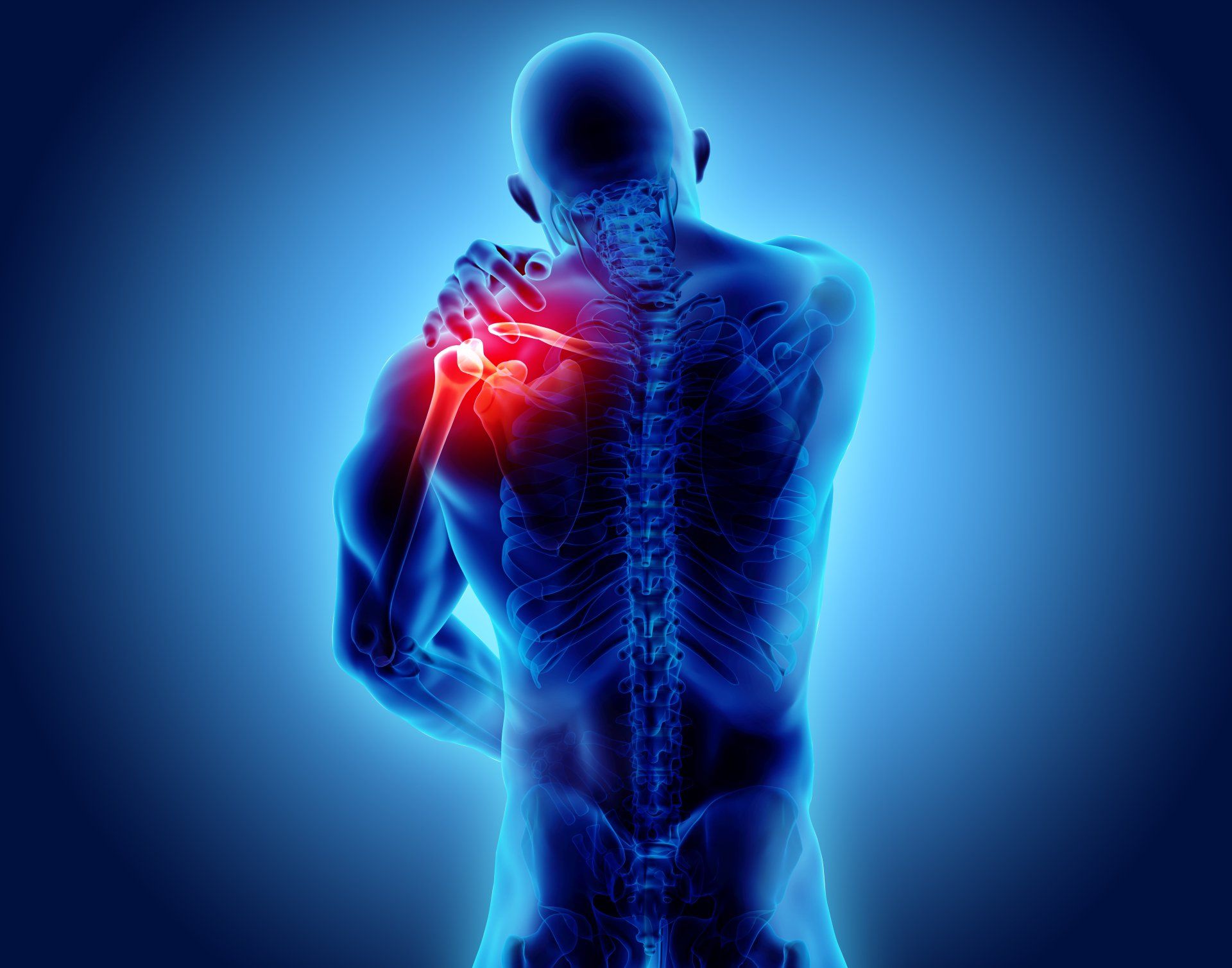Shoulder Pain Can Stop You from Doing the Things You Love
The shoulder has a wide and versatile range of motion. When something goes wrong with your shoulder, it hampers your ability to move freely and can cause a great deal of pain and discomfort.
Schedule Appointment Today
Contact Us
Reduce Pain
Reduce Inflammation
Recover Faster
Improve Range
What Causes Shoulder Pain?
- arthritis
- torn cartilage
- torn rotator cuff
- swollen bursa sacs or tendons
- bone spurs (bony projections that develop along the edges of bones)
- pinched nerve in the neck or shoulder
- broken shoulder or arm bone
- frozen shoulder
- dislocated shoulder
- injury due to overuse or repetitive use
- spinal cord injury
- heart attack
- Rotator Cuff pain
Laser Therapy Can Help Heal and Reduce Pain!
Shoulder Pain Studies Show Benefit
2014 Study Comparing Corticosteroid Injections to Laser Therapy
Low-level laser and local corticosteroid injection in the treatment of subacromial impingement syndrome: a controlled clinical trial. Kelle B, Kozanoglu E. Clin Rehabilitation, Feb 11 2014.
- Controlled clinical trial.
- 135 subjects with subacromial impingement syndrome.
- Subjects were allocated to three groups according to their order of admission:
- Local corticosteroid injection (group I) – injections were administered twice, with an interval of 10 days between each.
- Sham laser treatment (group II) – the treatment procedure was the same as for group III, with the exception that the laser device was not turned on.
- Low-level laser treatment (group III) – GaAs 904nm; 2J/cm² – performed 3x per week for a total of 9 sessions.
- Subjects were assessed at pre-treatment, post-treatment and 3 and 6 months after the first visit. The primary outcome of the study was pain intensity (visual analog scale) during activity and at rest. The secondary outcomes were, shoulder functional status and quality of life measured by the University of California at Los Angeles rating score (UCLA) and Nottingham Health Profile (NHP) scale respectively.
- Significant differences were observed between groups I and II and between groups II and III regarding pain during activity and at rest scores at all of the visits (p<0.05). Group I and III had significantly greater pain VAS reductions than group II at all time points. Only for the post-treatment test, pain VAS score was significantly more improved in group I than group III. For all other time points there was no significant differnce between group I and III. The UCLA scores (shoulder function) were significantly changed in all three study groups at all of the visits. Improvements were significantly greater in group I and III versus group II.
- The effectiveness of low-level laser treatment was similar to that of local corticosteroid injection in patients with subacromial impingement syndrome. Both low-level laser treatment and corticosteroid injection were more effective than sham laser treatment.
Laser Therapy for Shoulder Tendinitis
The efficacy of low-level laser therapy in supraspinatus tendinitis. Saunders L. Clinical Rehabilitation, May 1995;9(2):126-134
- Double-blind randomised controlled trial.
- 24 patients with supraspinatus tendinitis randomly assigned to two groups which received a course of 9 treatments and identical advice and educational material:
- the laser group was treated with a low- power laser using a 820 nm, 40 mW probe operating at 5000 Hz to produce a dose of 30 J/cm2.
- the control group was treated with a similar, but sham laser.
- Outcomes included perceived pain was assessed and tenderness and secondary muscle weakness measured before and after the course of treatment.
- The results showed that laser therapy, advice and education improved certain symptoms of supraspinatus tendinitis, while the same advice and education but treatment with a sham laser had no such beneficial consequences.
- Significant improvement of pain and secondary weakness with laser treatment compared to placebo in supraspinatus tendinitis.
If you or someone you love is suffering from shoulder pain that is keeping you from doing the things you love or spending time with the ones you love... Call Us today so we can help you get on the road to pain free.



